If a picture is worth a thousand words, then an animated gif must be priceless! Below you will find a collection of simple and elegant animations that explain how various things work. From geometry to mechanics and everything in between, these animations help educate and explain how the world around us functions.
Through these animations I hope you will have a greater appreciation for the ingenuity of humans and a newfound respect for the great thinkers and inventors throughout history. Enjoy!
1. How a Zipper Works

2. Illustrating Pi: Unrolling a Circle’s Circumference

3. How a Pill Press Works

A tablet press is a mechanical device that compresses powder into tablets of uniform size and weight. A press can be used to manufacture tablets of a wide variety of materials, including pharmaceuticals, illicit drugs such as MDMA, cleaning products, and cosmetics. To form a tablet, the granulated material must be metered into a cavity formed by two punches and a die, and then the punches must be pressed together with great force to fuse the material together. [Source: Wikipedia]
4. How Walschaerts Valve Gear in
Steam Locomotives Works

The Walschaerts valve gear is a type of valve gear invented by Belgian railway mechanical engineer Egide Walschaerts in 1844 used to regulate the flow of steam to the pistons in Steam Engines. The gear is sometimes named without the final “s”, since it was incorrectly patented under that name. It was extensively used in steam locomotives from the late 19th century until the end of the steam era. [Source: Wikipedia]
5. What a Tesseract (4D Cube) Looks Like

In geometry, the tesseract, also called an 8-cell or regular octachoron or cubic prism, is the four-dimensional analog of the cube; the tesseract is to the cube as the cube is to the square. Just as the surface of the cube consists of 6 square faces, the hypersurface of the tesseract consists of 8 cubical cells. [Source: Wikipedia]
6. Knight’s Tour: How a Knight Visits
Every Square Once
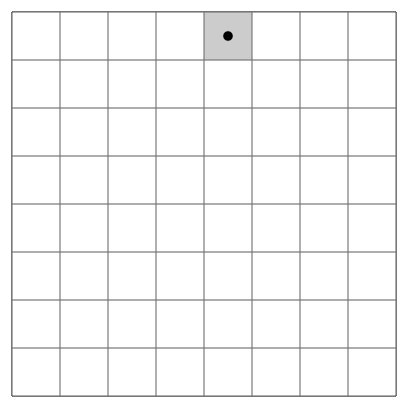
A knight’s tour is a sequence of moves of a knight on a chessboard such that the knight visits every square exactly once. The exact number of open tours on an 8×8 chessboard is still unknown.
Creating a program to find a knight’s tour is a common problem given to computer science students. Variations of the knight’s tour problem involve chessboards of different sizes than the usual 8 × 8, as well as irregular (non-rectangular) boards. [Source: Wikipedia]
7. How a Caliper Works
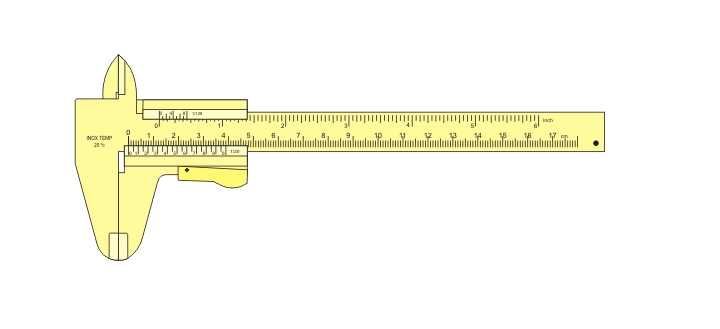
8. How a Constant Velocity Joint Works
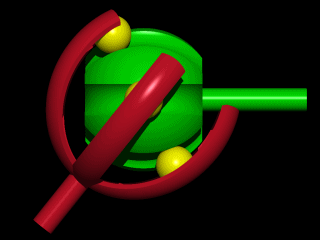
Constant-velocity joints (aka homokinetic or CV joints) allow a drive shaft to transmit power through a variable angle, at constant rotational speed, without an appreciable increase in friction or play. They are mainly used in front wheel drive and all wheel drive cars. Rear wheel drive cars with independent rear suspension typically use CV joints at the ends of the rear axle halfshafts, and increasingly use them on the propshafts. [Source: Wikipedia]
9. How Circle Strafing Works

In video games, strafing is the technique of moving the player’s character from side to side, rather than forward and backward. Circle strafing is the technique of moving around a target in a circle while facing it. Circle strafing allows a player to fire continuously at an opponent while dodging counterattacks. By rapidly circling the opponent, the player evades the opponent’s sights. [Source: Wikipedia]
10. Proving the Pythagorean Theorem
Through Rearrangement
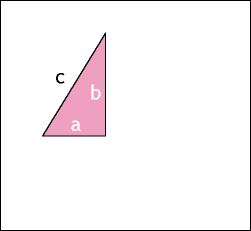
11. How a Radial Engine Works

The radial engine is a reciprocating type internal combustion engine configuration in which the cylinders point outward from a central crankshaft like the spokes of a wheel. It resembles a stylized star when viewed from the front, and is called a “star engine” (German Sternmotor) in some languages. The radial configuration was very commonly used in aircraft engines before turbine engines became predominant. [Source: Wikipedia]
12. How the Geneva Drive Works
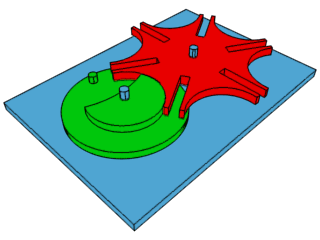
The Geneva drive or Maltese cross is a gear mechanism that translates a continuous rotation into an intermittent rotary motion. The rotating drive wheel has a pin that reaches into a slot of the driven wheel advancing it by one step. The drive wheel also has a raised circular blocking disc that locks the driven wheel in position between steps.
The name derives from the device’s earliest application in mechanical watches, Switzerland and Geneva being an important center of watchmaking. Another application of the Geneva drive is in movie projectors: the film does not run continuously through the projector. Instead, the film is advanced frame by frame, each frame standing still in front of the lens for 1/24 of a second (and being exposed twice in that time, resulting in a frequency of 48 Hz). This intermittent motion is achieved using a Geneva drive. [Source: Wikipedia]
13. How the Spinning Dancer Illusion Works

The Spinning Dancer is a kinetic, bistable optical illusion resembling a pirouetting female dancer. Some observers initially see the figure as spinning clockwise and some counterclockwise. Additionally, some may see the figure suddenly spin in the opposite direction. The illusion derives from an inherent ambiguity from the lack of visual cues for depth. [Source: Wikipedia]
14. How a Hypotrochoid is Made

A hypotrochoid is a roulette traced by a point attached to a circle of radius r rolling around the inside of a fixed circle of radius R, where the point is a distance d from the center of the interior circle. [Source: Wikipedia]
15. How an Alpha Stirling Engine Works
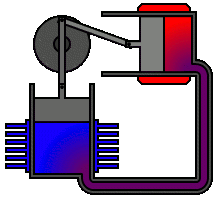
A Stirling engine is a heat engine operating by cyclic compression and expansion of air or other gas, the working fluid, at different temperature levels such that there is a net conversion of heat energy to mechanical work. Or more specifically, a closed-cycle regenerative heat engine with a permanently gaseous working fluid, where closed-cycle is defined as a thermodynamic system in which the working fluid is permanently contained within the system, and regenerative describes the use of a specific type of internal heat exchanger and thermal store, known as the regenerator. It is the inclusion of a regenerator that differentiates the Stirling engine from other closed cycle hot air engines. [Source:Wikipedia]
16. How to Draw a Yin Yang Symbol
Using Circles

17. How a Wankel Engine Works

The Wankel engine is a type of internal combustion engine using an eccentric rotary design to convert pressure into a rotating motion instead of using reciprocating pistons. Its four-stroke cycle takes place in a space between the inside of an oval-like epitrochoid-shaped housing and a rotor that is similar in shape to a Reuleaux triangle but with sides that are somewhat flatter. The very compact Wankel engine delivers smooth high-rpm power. It is commonly called a rotary engine, though this name applies also to other completely different designs.
The engine was invented by German engineer Felix Wankel. He received his first patent for the engine in 1929, began development in the early 1950s at NSU, completing a working prototype in 1957. NSU then licensed the concept to companies around the world, which have continued to improve the design. It is the only internal combustion engine invented in the twentieth century to go into production.
Thanks to their compact design, Wankel rotary engines have been installed in a variety of vehicles and devices including automobiles, motorcycles, racers, aircraft, go-karts, jet skis, snowmobiles, chain saws, and auxiliary power units. [Source: Wikipedia]
18. How a Sewing Machine Works

19. How the Sun and Planet Gear Works

The sun and planet gear (also called the planet and sun gear) was a method of converting reciprocal motion to rotary motion and was utilised in a reciprocating steam engine. It was invented by the Scottish engineer William Murdoch, an employee of Boulton and Watt, but was patented by James Watt in October 1781. It was invented to bypass the patent on the crank, held by James Pickard. It played an important part in the development of devices for rotation in the Industrial Revolution. [Source: Wikipedia]
20. How The New York Times Crossword
Before the 1996 Election Worked






